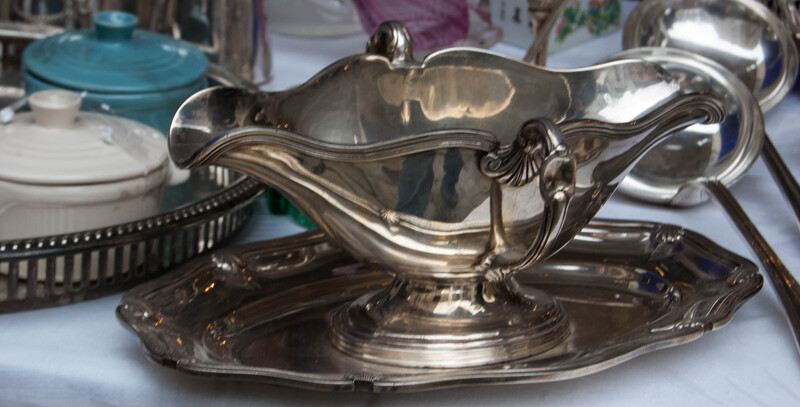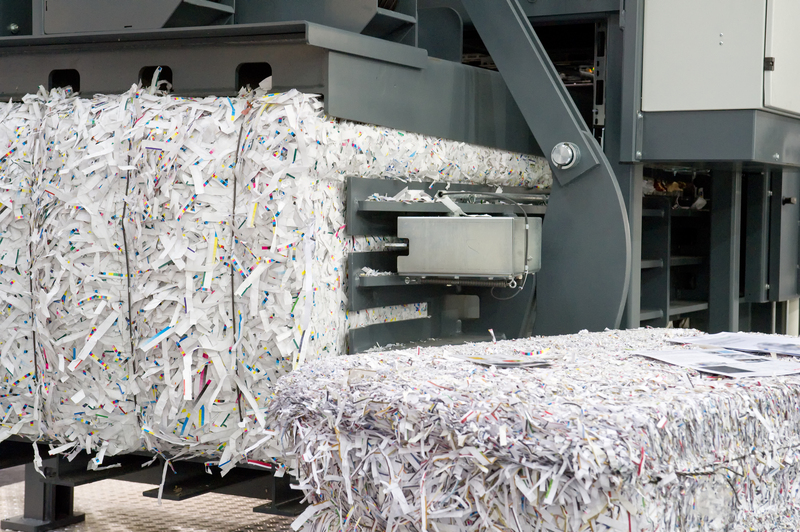How To Turn Recyclables Into Conversation-Starting Works Of Art
In our ever-evolving world, environmental awareness is more crucial than ever. Recycling is a powerful act, but what if we took things a step further and transformed everyday discarded items into awe-inspiring recycled artworks? Not only can you help the planet, but you can also create conversation-starting works of art that bring personality and purpose to your space. Whether you're an eco-conscious crafter or an artist looking for fresh inspiration, this comprehensive guide will show you how to turn recyclables into art that sparks interest, dialogue, and positive change.
Why Create Art From Recyclables?
Before diving into the "how," let's explore the "why." Turning recyclables into creative masterpieces isn't only about sustainability; it's also about innovation, self-expression, and community impact. Here are some compelling reasons to embrace recycled art:
- Environmental Benefits: Repurposing materials reduces landfill waste and conserves resources.
- Accessibility: Art supplies can be expensive, but recyclables are often free and abundant.
- Creativity Unleashed: Challenging yourself to use unconventional materials pushes your creative boundaries.
- Unique Results: Each piece is one-of-a-kind, reflecting both your vision and the journey of the materials used.
- Conversation Starters: Upcycled art pieces invite questions and admiration, offering opportunities to discuss sustainability.

Types of Recyclables Perfect for Art Projects
Not everything belongs in the recycling bin. Some objects are ideal for creative reuse, especially when you're looking to craft eye-catching recycled art projects:
- Plastic Bottles & Caps: Great for sculpting, mosaics, and even lighting features.
- Glass Jars & Bottles: Use as vases, candle holders, or canvas for painting.
- Cardboard & Paperboard: Versatile for collages, sculptures, or structural bases.
- Fabric Scraps: Create patchwork art, wall hangings, or textile sculptures.
- Metal Cans & Lids: Ideal for mobiles, garden art, or metallic wall installations.
- Old Magazines & Newspapers: Perfect for tiled mosaics, papier-mache, and collage art.
- Wine Corks, Bottle Caps, CDs: These smaller items add detail to mixed-media pieces.
Tip: Always clean and dry your materials before starting your project to ensure safety and longevity.
Step by Step: Creating Art From Recyclables
1. Collect and Curate Your Materials
The first step in making conversation-starting art from recyclables is to gather a variety of interesting materials. Some artists prefer to work with specific types--like plastic or cardboard--while others enjoy mixing mediums. Consider what you already have at home, or ask friends and neighbors to contribute.
- Keep collection bins for plastics, metals, glass, and papers.
- Think beyond the basics--look for unusual shapes, colors, or textures.
- Sort and organize for easy access during your creative process.
2. Find Inspiration and Plan Your Project
Browse art books, platforms like Pinterest or Instagram, and local galleries for examples of upcycled art. Consider how you can use your chosen materials in innovative ways.
- Sketch your ideas or create a simple mood board.
- Decide if your art will be functional (like a lamp or organizer) or purely decorative (like a mural or sculpture).
- Think about the story you wish to tell--art from recyclables can highlight issues like ocean pollution, urban waste, or even joy in renewal!
3. Prepare Your Work Area and Tools
Safety first! Depending on your project, you may need:
- Glue (hot glue, super glue, or decoupage glue)
- Scissors, utility knives, or wire cutters
- Pliers, hammers, or screwdrivers
- Paints, brushes, or markers
- Masks and gloves for working with sharp or dusty materials
4. Start Creating!
Now the fun begins. Here are a few creative techniques for transforming recyclable materials into art:
- Sculpt and Assemble: Use hot glue, screws, or wire to attach objects together, building up your piece layer by layer.
- Paint and Decorate: Add color, patterns, and even text to unify your materials or make them pop.
- Collage: Layer different paper textures to create depth or imagery.
- Carve and Cut: Shape plastic, cardboard, or metal for intricate details.
- Mix Media: Combine materials for contrast--plastic with wood, metal with textiles, and so on.
Examples of Inspiring Recycled Art Projects
Not sure where to begin? Here are some imaginative upcycled artwork ideas to kickstart your creativity:
Plastic Bottle Flower Installations
Collect plastic bottles and cut them into petal shapes. Paint in bright colors, then assemble on a canvas, fence, or wall to create a stunning bouquet. Secure with glue or nails for outdoor durability.
Magazine Collage Portraits
Tear or cut out pieces from old magazines to form mosaic-style portraits or landscapes. Layer for texture and depth--this technique works beautifully for both wall art and decorative trays.
Cardboard Sculptures
Using layers of cardboard, you can build impressive 3D animals, masks, or abstract forms. Try painting or paper-mache over your finished sculpture for a smooth, professional look.
Can and Lid Mobiles
String together metal cans, lids, and bottle caps to form wind chimes, mobiles, or garden sculptures. Experiment with different arrangements and paint for extra flair.
Glass Jar Lanterns
Repurpose glass jars by painting or etching them, then adding tea lights or fairy lights. Suspend them with wire or twine for enchanting indoor or patio lighting.
Tips for Making Your Recycled Art a True Conversation Piece
- Tell a Story: Incorporate themes or narratives into your work. For example, use ocean plastics to highlight marine conservation.
- Go Big: Larger installations or wall pieces are more likely to catch the eye and invite questions.
- Interact: Encourage interaction--moving parts, tactile textures, or augmented reality elements.
- Use Humor or Irony: Play with recognizable objects in surprising ways.
- Document Your Process: Share your journey on social media or via QR codes attached to the artwork, enabling viewers to see transformation from trash to treasure.
Best Practices for Sustainable Recycled Art
While creating art from reused materials is inherently green, you can amplify your efforts by:
- Using non-toxic, eco-friendly paints and adhesives.
- Minimizing additional waste by planning your cuts and assembly processes.
- Partnering with local recycling centers or organizations to source unique materials.
- Educating and involving your community through workshops, school programs, and art shows.
Taking Your Recycled Art to the Next Level
If you want your recycled conversation art to have broader impact, consider these strategies:
- Public Installations: Collaborate with local businesses, schools, or municipalities to display your work outdoors or in community spaces.
- Sell or Auction: Sell your pieces online or at eco-art fairs, donating proceeds to environmental causes.
- Teach Others: Host recycled art workshops and share your techniques with others.
- Document and Share: Start a blog, YouTube channel, or Instagram account dedicated to your creations and process.
Spotlight: Notable Artists Who Turn Recyclables Into Art
Many celebrated contemporary artists and collectives have pioneered the art of upcycling. Here are a few to inspire you:
- Vik Muniz - Known for creating large-scale portraits and landscapes using materials like trash, sugar, and even chocolate.
- Michelle Reader - Fuses recycled metals, plastics, and other found items into whimsical, kinetic sculptures.
- El Anatsui - Transforms thousands of discarded bottle caps and metal scraps into immense, shimmering tapestries.
- Jane Perkins - "Remakes" famous paintings using buttons, beads, toys, and everyday plastics to dazzling effect.

Frequently Asked Questions About Recycled Art
Is recycled art durable?
Many upcycled art pieces are surprisingly robust--especially when made with well-chosen materials and proper adhesives. For outdoor installations, consider weather-resistant paints and sealants.
Can children participate in recycled art projects?
Absolutely! Recycled crafts for kids can be fun and educational. Always supervise when using sharp tools or hot glue, and choose age-appropriate materials and projects.
Where can I display recycled artwork?
Anywhere! Living rooms, offices, gardens, public spaces, schools, community centers--the more visible, the better for sparking conversations and promoting sustainability.
How do I clean and prepare recyclables safely?
Wash with soap and water; remove labels, glue, and residues. For glass or metal, sand sharp edges. Let everything dry fully before use.
Conclusion: Embrace the Art of Transformation
Turning recyclables into conversation-starting works of art is a creative way to contribute to environmental preservation, elevate your personal spaces, and advocate for a more thoughtful, sustainable world. Whether you're crafting a whimsical sculpture from bottle caps or a poignant mural out of discarded magazines, your art can inspire change, spark dialogue, and showcase the beauty of second chances.
Ready to get started? Unleash your imagination, raid your recycling bin, and let your journey into recycled art begin!
```